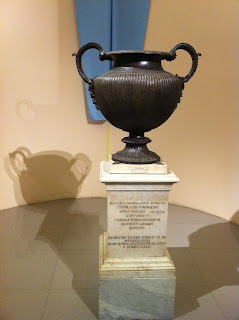Thursday, October 27, 2011 -  Beltracchi,convictions,German forgers
Beltracchi,convictions,German forgers
 No comments
No comments
 Beltracchi,convictions,German forgers
Beltracchi,convictions,German forgers
 No comments
No comments
German Art Forger and Three Associates Sentenced to Total of 15 Years Jail
"An art forger and his three accomplices, who made at least 10 million euros ($14 million) by selling oil paintings they falsely attributed to famous artists, were today sentenced to a total of 15 years in prison by a court in Cologne," reports Catherine Hinkley for Bloomberg.com in "German Gang Jailed 15 Years Total for $14 Million Forged Ernst, Derains":
Dealers and collectors say confidence in the German art market has been shaken by the forgery scandal, described as the biggest ever in Germany, as art historians, museums and auction houses were duped by the fake pictures.
The defendants' "confessions" saved the state prosecution the cost of an extensive trial and "appearances that could have been embarrassing for some witnesses", reported Hinkley.
The forgers were only caught out when one buyer became suspicious and sent his picture to be examined by scientists. They discovered a paint color that had not existed at the time the work was supposed to have been produced.
As many as 41 more paintings not included in the trial because of statutes of limitations may also be forgeries by Beltracchi. The scandal has also spawned a number of civil cases against dealers and auction houses, as well as the criminal trial. Kremer said today it is not the job of the court to try to uncover each forgery.









